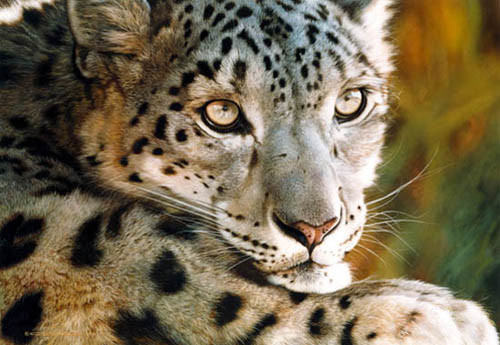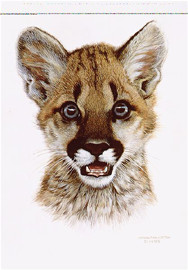Description
20 x 28 1/2;Offset Paper;Edition Size 950;$275 U.S.
21 x 30;Canvas Collection;Edition Size 350;$495 U.S.
“For many people, it will remain only a dream to see, once in their lifetime, a snow leopard in the wild. None of my friends who went to the Himalayas have seen one. The chances are low because this wonderful animal has seen its numbers fall dramatically. Hunted for its beautiful fur, the snow leopard has a hard time surviving as a species. Will people be smart enough to find a way to protect this mountain predator?
The vast mountain range where he lives makes it very difficult to introduce a hunting control system. Rich hunters go hunting the different wild sheep for trophies. When they see a snow leopard, the temptation is great to put it down. Education is probably the only way to save this magnificent predator. The beauty of this animal makes it very attractive to paint. The thick fur is a delight for an artist like me who loves to paint texture so much.
Predators are not cruel. It is not for us to judge the rules of nature. Cats take out the weak and sick ones, so the species of prey they take keeps the genes of the strong survivors. Everything eats everything in nature; there is no compassion. It is the law of survival and the art of staying alive and reproducing so that the species keeps going.
It is sad to think that so beautiful an animal will one day no longer be found in the wild. The title is taken from an old Scandinavian fairy tale about a mythical place that could only be reached if one were to travel to a remote destination east of the sun and west of the moon. The day will come when, unfortunately, even if you were to travel to the farthest corners of the earth, you will not find the snow leopard roaming free, high in the Himalayas. This beautiful creature will be found only in zoos and seen in photos or in paintings such as this.”
— Carl Brenders


